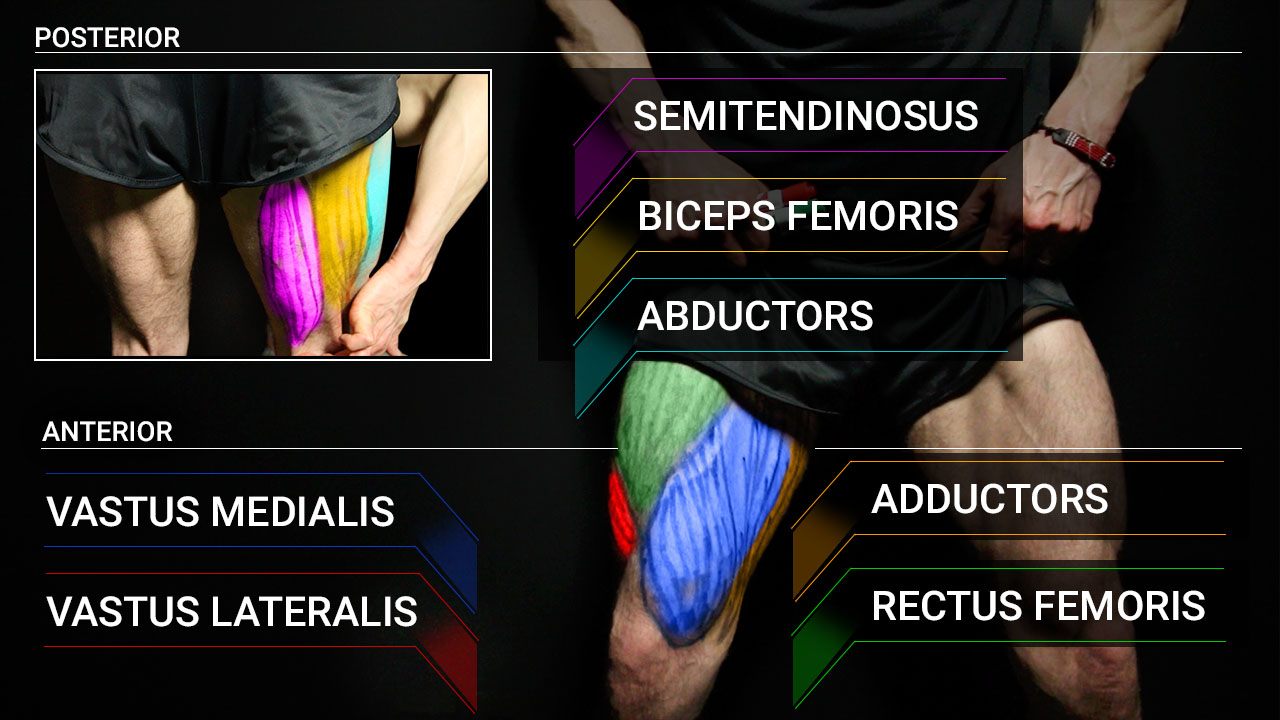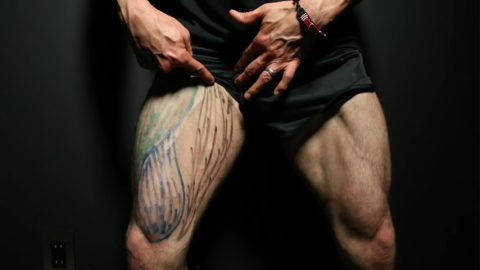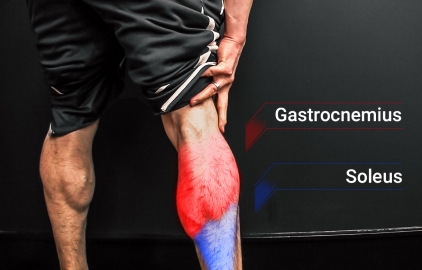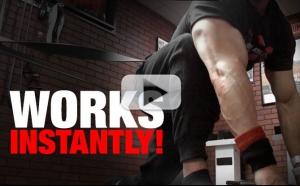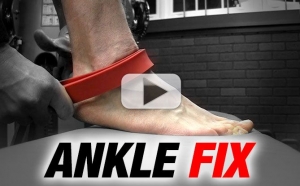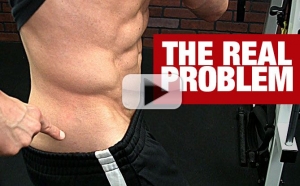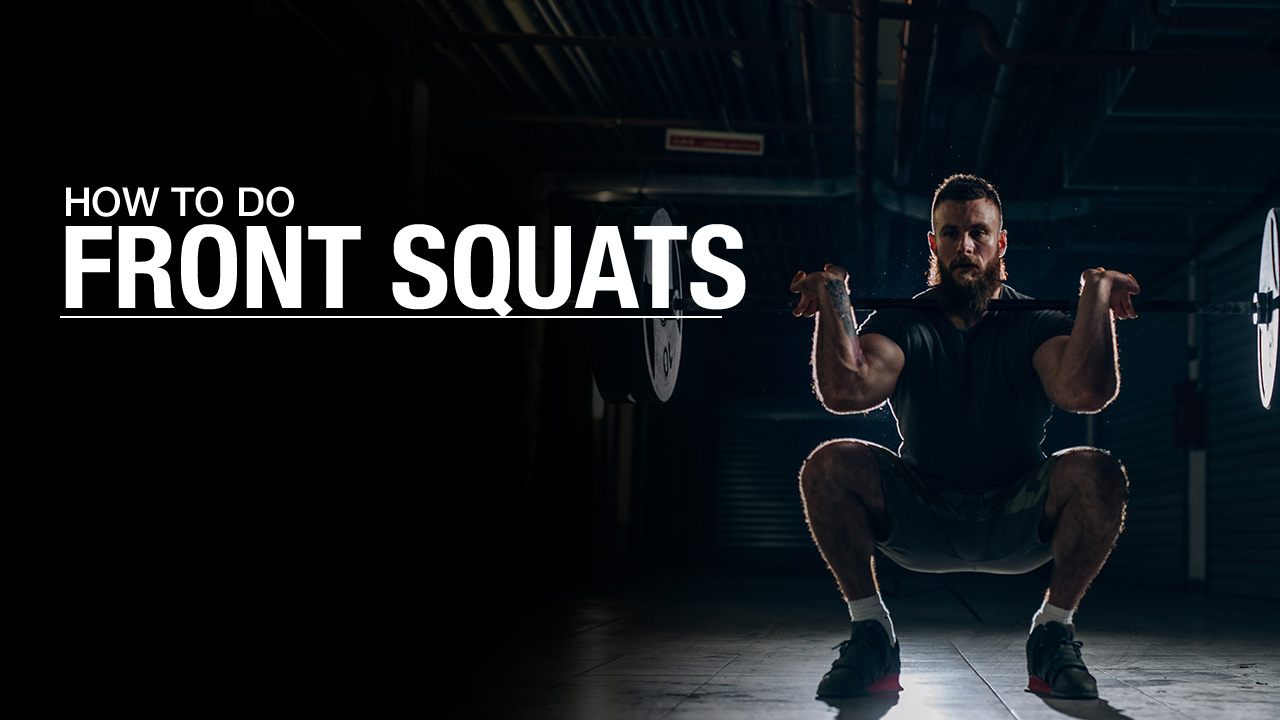
DOING THE FRONT SQUAT CORRECTLY
Guys, the truth is that most of you should be doing the Front Squat, not the Back Squat.
And this is regardless of your level of fitness.
First, let me just say that I love the Back Squat, because it’s one of the best lifts for athletes. It’s a great exercise in comparison, but here’s the truth: it hides a lot of flaws.
As a physical therapist and personal trainer, I’m all about exercise science.
And I have to point out that if you have mobility or flexibility restrictions—like limited ankle movement or a thoracic spine not ready for squatting—you can hide these limitations much more easily in a back squat than in a front squat.
So, why do I want you to Front Squat?
I want to see if you have these restrictions, and you should too. You won’t be able to safely Back Squat long-term if these mobility issues are present. Identifying and addressing them now is crucial for your continued progress and injury prevention.
So, when you switch over to the Front Squat, you’ll see right away that you’d better have proper thoracic extension or the ability to keep your back upright as you go down.
And as you lower yourself to level, your elbows have to stay up as well. If they start to sink or if your back starts to round, you probably don’t have good thoracic extension and it’s going to ultimately pay its dues on your body in the Back Squat.
You just won’t see it as readily as you would on this resistance exercise. Same thing with ankle mobility restrictions. Same thing with hip restrictions.
So, what you want to do is reveal those limitations with the Front Squat.
Today, I’m going to teach you exactly how to perform the Front Squat with correct form so you can find those restrictions and fix them. Let’s jump into it!
FRONT SQUATS: MUSCLES WORKED
Ask any strength coaches, and they’ll tell you that mastering the mind-to-muscle connection is key to maximizing the benefits of Front Squats.
Understanding which muscles are engaged helps you focus your efforts, ensuring each rep builds physical strength and stability effectively.
Whether you’re doing a Traditional Squat, Box Squat, or an Overhead Squat, these muscles ensure effective quad strength and athletic performance.
Strengthening these muscle groups isn’t just for athletes—it’s vital for anyone looking to improve mobility, build muscle mass, and enhance their workout routine.
Remember, keeping proper elbow alignment and popular grip options like the clean grip or bodybuilder grip can optimize your squat form and protect against knee pain and poor wrist strength.
Stay focused on proper posture and perfect form to maximize your gains and stay injury-free.
Below are the major muscles involved in the Front Squat.
QUADRICEPS
The quadriceps – thigh muscles – are the largest muscles in the legs, composed of four distinct heads:
VASTUS LATERALIS

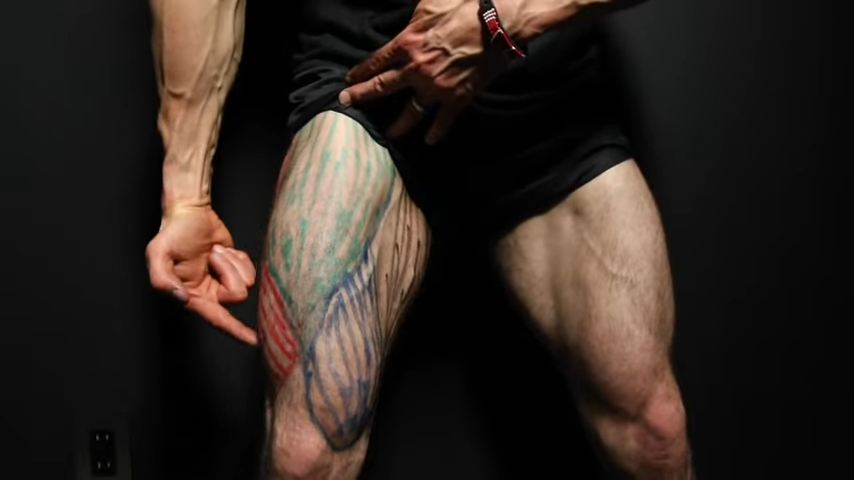
Let’s talk about the vastus lateralis, one of the primary muscles in the front of your leg that plays an important role in various squat variations as well as knee extension.
In exercises like the Barbell Squat, Front Squat, and Goblet Squats, the vastus lateralis helps you maintain an upright torso position, which is essential for proper form and reducing injury risk.
VASTUS MEDIALIS


The vastus medialis, located on the inner front thigh, is required for knee extension and stability.
It engages during deep squats, like Barbell Front Squats and Bulgarian Split Squats, enhancing your lower-body strength routine and proper form.
Building strength in this muscle reduces the risk of knee injuries and improves overall performance, making it essential for athletes and fitness enthusiasts alike.
VASTUS INTERMEDIUS

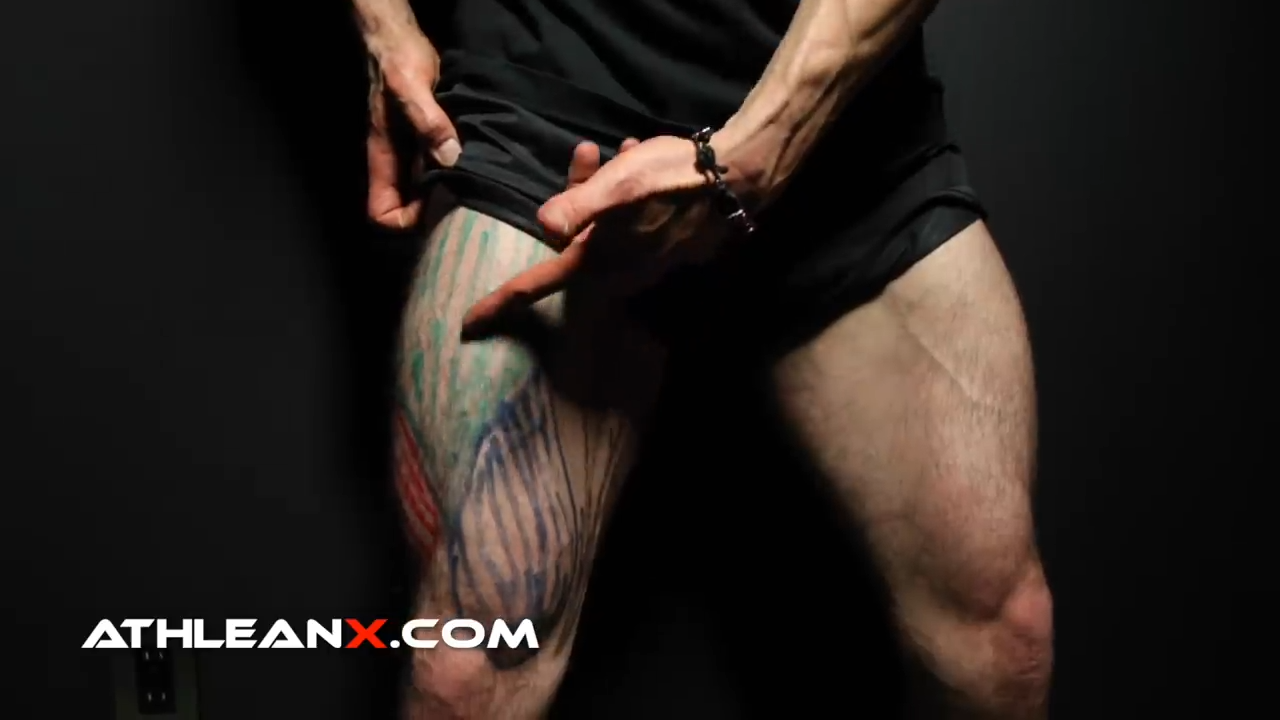
The vastus intermedius, tucked between the vastus lateralis and vastus medialis originates from the anterior and lateral surfaces of the femur.
This muscle is important for knee extension and maintaining upright posture during compound movements like the Barbell Front Squat and Air Squats.
RECTUS FEMORIS

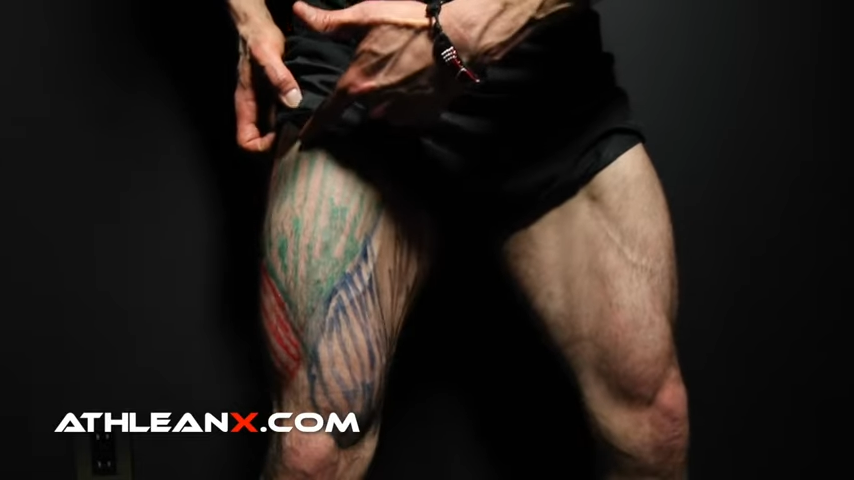
The rectus femoris stands out as the only quad muscle that attaches above the hip, enabling it to play a dual role.
Not only does it aid in knee extension, but it also facilitates hip flexion, lifting your leg and contributing to advanced movements like High Knees and Leg Raises.
This dual functionality makes it a crucial muscle for exercises involving both knee and hip motion, enhancing overall lower-body strength and mobility.
HAMSTRINGS
Turn to the back of your legs, and you’ll discover the hamstring muscles. These powerful muscles are divided into two main groups:
BICEPS FEMORIS

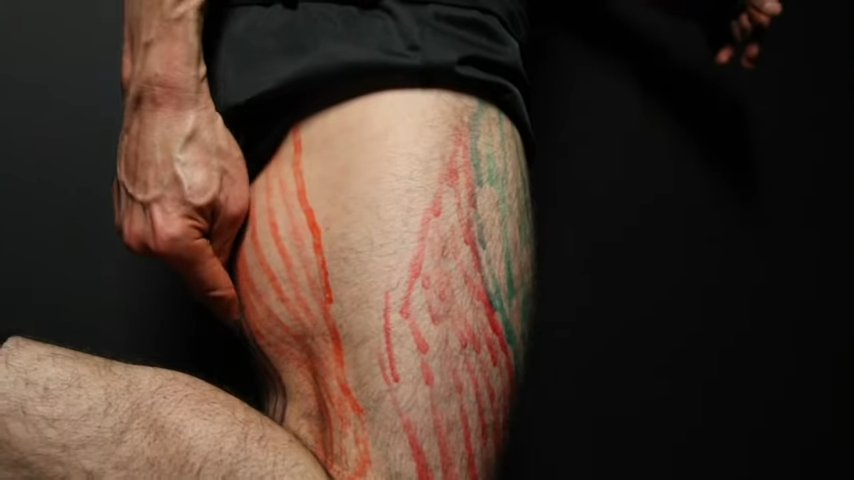
Originating from the ischial tuberosity and femur, the biceps femoris is crucial for knee flexion, hip extension, and overall hamstring strength.
This muscle powers you through competitive movements like Deadlifts and sprints, enhancing your posterior chain strength and athletic performance.
Strengthening the biceps femoris is essential for reducing injury risk and improving overall leg function.
Integrate exercises like Romanian Deadlifts and Leg Curls into your routine to maximize its power and keep your lower body muscles strong and resilient.
SEMITENDINOSUS

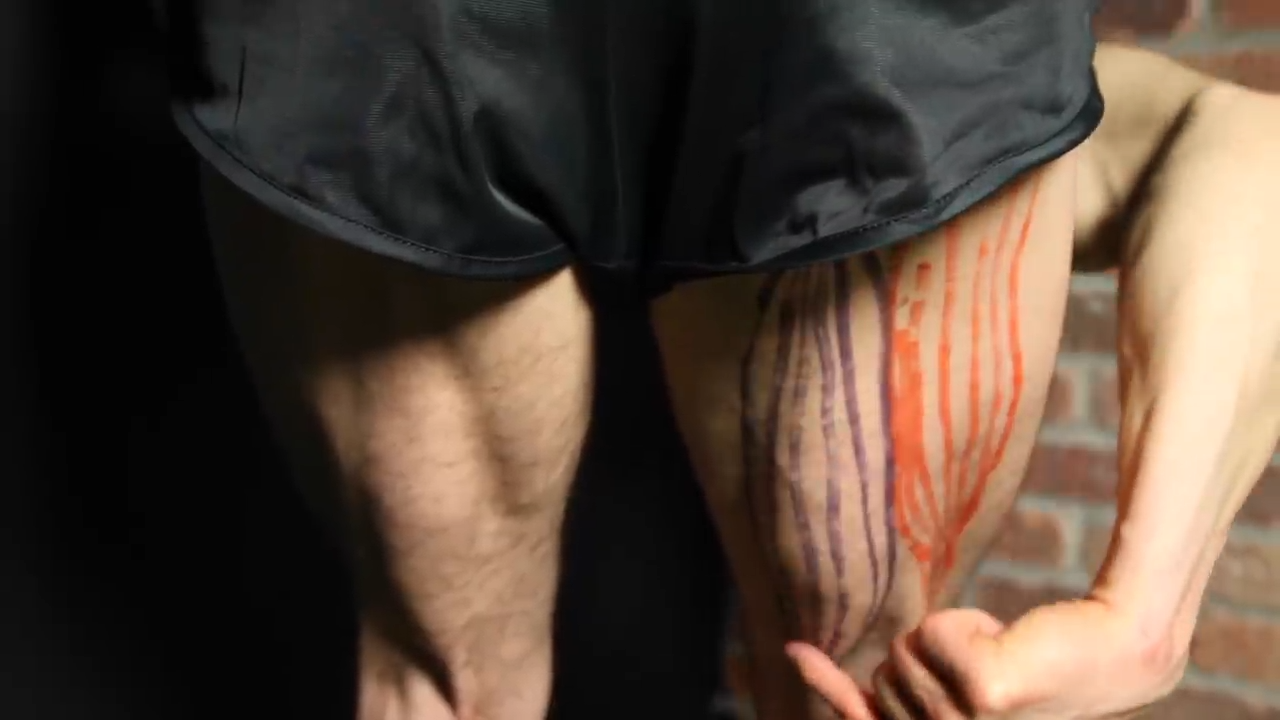
The semitendinosus, the other part of your hamstrings, helps with knee flexion and hip extension.
It stabilizes your pelvis during essential movements like Squats and Deadlifts, boosting posterior chain strength and athletic performance.
ADDUCTORS AND ABDUCTORS
Often overlooked but crucial, the adductors and abductors are located on the inner and outer thighs.
ADDUCTORS
The adductors, situated on the inner side of the anterior chain, are important for a balanced leg exercise training routine.
These muscles not only assist in hip adduction but also play a role in rotation and flexion of the thigh.
Neglecting the adductors can lead to imbalances and a higher risk of injury.
Properly training these muscles enhances overall leg strength, stability, and mobility, contributing to better athletic performance and functional movements.
ABDUCTORS
Often overlooked and consequently weak, the abductors are crucial for leg stability and lateral movement.
These essential muscles help move your legs outward and ensure stability during single-leg exercises.
Neglecting them is a big mistake, as strong abductors are vital for maintaining balance and enhancing athletic performance.
CALVES
Finally, we reach the lower leg: the calves. The calf muscle has two key parts: the gastrocnemius and the soleus.
GASTROCNEMIUS
When it comes to big calves, the gastrocnemius is the star player. This is the muscle most people think of when they envision impressive calf size.
The gastrocnemius not only helps with leg flexion at the knee but also with plantar flexion at the foot.
But here’s the catch: if you want truly three-dimensional calves, the soleus is just as important.
SOLEUS
The soleus hides behind the gastrocnemius, but don’t let that fool you. While the gastroc gets all the glory for being the big calf muscle, it’s the soleus that does the heavy lifting.
Here’s the deal: the upper part of the soleus sits behind the gastrocnemius. When you build up the soleus, it pushes the Gastroc outward.
The result? Your entire calf looks larger and more developed.
ABDOMINALS
Unlike Barbell Back Squats where the focus is on holding the barbell up through the posterior chain (back), the Front Squat demands more from the front of your body. This is where the abs come into play.
RECTUS ABDOMINIS

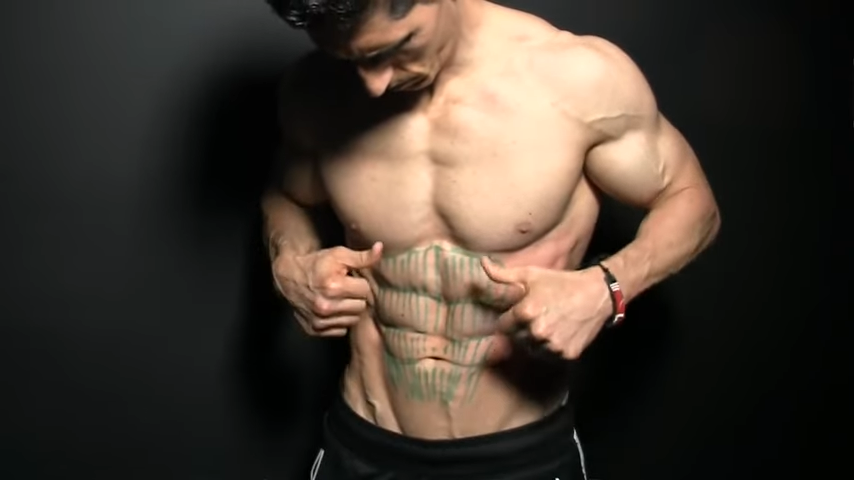
The rectus abdominis is the largest muscle in the abdominal region. When we mention ‘upper abs’ and ‘lower abs,’ we’re referring to different regions of this same muscle that spans almost the entire torso.
This is the muscle that forms the coveted six-pack!
The rectus abdominis fibers run vertically from top to bottom, and this muscle is responsible for flexing the torso, whether you’re curling up from the top or lifting your legs from the bottom.
HOW TO DO THE FRONT SQUAT
Mastering the Front Squat is essential for building lower body strength and improving overall athletic performance.
This guide will walk you through the proper technique to ensure you maximize muscle activation while minimizing the risk of injury.
Let’s dive in and perfect your Front Squat form.
USE WRIST STRAPS
The first step in performing the Front Squat starts with considering your wrist mobility.
If you’re a guy with limited wrist mobility or if you have wrist pain and mobility issues, then this is where you want to start.
Now, some of you might already know that I actually don’t prefer to use wrist straps for grip assistance.
I feel like you’re better off trying to train your intrinsic hand strength.
You’ll improve your grip strength and forearm strength when you’re lifting heavy weights over time.
But if you’re doing the Front Squat, you might run into the issue of wrist mobility and that’s what I like to use these for.
The reason is that with the Front Squat we sometimes have wrist mobility issues that prevent us from getting in the proper position, which is elbows up and high.
And you can utilize wrist straps and these grip instructions to overcome that issue:

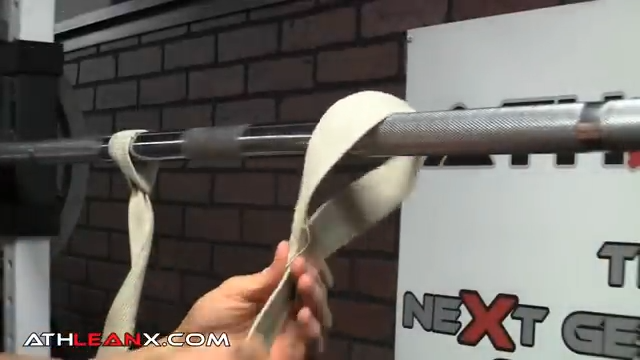
You take the wrist strap, and you wrap it around and secure it to the bar like in the video example above.
Do the same thing on the other side.

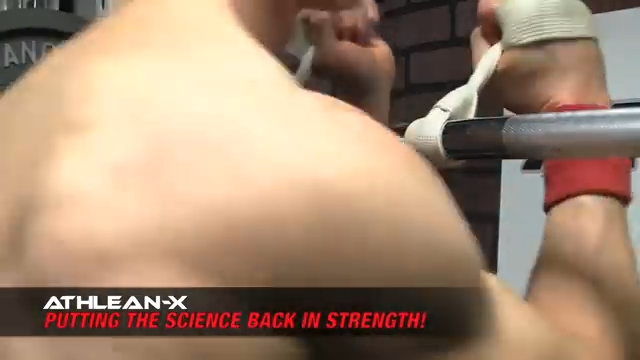
And now, when we get into position for the Front Squat, we’re going to grab the handles, wrap them around once and then get up on the other side of the bar.
From here, when you do your Front Squat up in this position, you actually have a neutral grip instead of an exaggerated extension.
Most importantly, you can execute the Front Squat that you couldn’t do before, and here’s how to do just that:
FRONT SQUAT

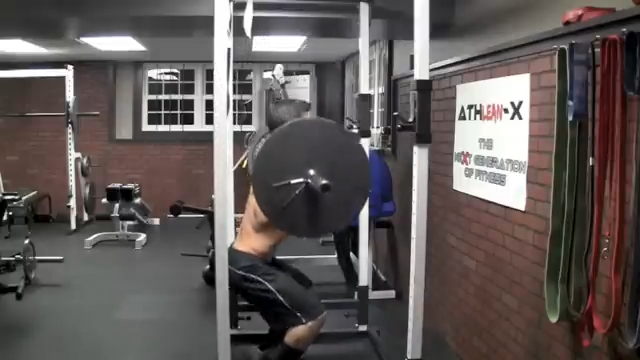
HOW TO DO THE FRONT SQUAT:
- Start by setting the barbell on a squat rack at about chest height.
- Approach the bar and use a clean grip, placing your fingertips under the bar with elbows high and parallel to the ground. Or use the trick I described above using wrist straps. This grip ensures an upright torso position, crucial for maintaining proper form throughout the exercise.
- Step back from the rack with the barbell resting on your front delts, not your hands.
- Keep your chest up, core tight, and feet shoulder-width apart. Take a deep breath.
- Begin the movement by sitting back and down, ensuring your elbows remain high to maintain an upright posture.
- Lower yourself until your thighs are at least parallel to the ground, achieving a deeper squat.
- Drive through your heels to stand back up, keeping your torso upright and core engaged.
- Avoid letting your knees cave in or your heels lift off the ground.
- Focus on the mind-to-muscle connection throughout the movement. Feel the quads and glutes powering you up and ensure your abs are stabilizing your torso.
WHAT MAKES IT EFFECTIVE: The Front Squat is one of the most effective exercises for lower body development because it emphasizes the quads and core due to the upright torso position, while also improving mobility and reducing spinal load compared to back squats.
FRONT SQUAT: COMMON MISTAKES
When it comes to performing the Barbell Front Squat, many athletes fall into the trap of poor form, which not only limits muscle growth but also increases the risk of injury.
By paying attention to these common mistakes and correcting them, you can elevate your front squat performance, build significant muscle mass, and ensure a safe and effective lower-body workout routine.
Whether you’re doing Barbell Front Squats, Goblet Squats, or any other type of squat, proper form is key to unlocking your full strength potential.
Here’s how to avoid the most common mistakes and ensure you’re getting the most out of this powerful compound exercise.
INCORRECT GRIP AND ELBOW POSITION
Using a loose grip or letting your elbows drop can ruin your form.
A proper grip, whether it’s a clean grip, classic grip, or bodybuilder grip, ensures that your elbows stay high, maintaining an upright torso position crucial for effective quad strength and minimizing pain.
Proper elbow placement is essential to stabilize the barbell on your upper chest, which supports a safe squat position and prevents unnecessary strain on your wrists.
LACK OF MOBILITY
Poor wrist mobility and insufficient ankle mobility can severely affect your squat form.
Incorporate wrist flexibility exercises and ankle mobility drills into your complete exercise program to achieve a deeper squat and reduce injury risk.
Sufficient mobility allows for proper depth and movement efficiency, ensuring that you can perform a full-body lift without compromising your posture or increasing your injury risk.
If you don’t have the wrist mobility to get your elbows up and high, remember that you can also incorporate wrist straps into the exercise.
LEANING FORWARD
Allowing your torso to lean forward shifts the load to your lower back instead of your thighs.
Focus on keeping an upright posture by engaging your core muscles, including the abdominal muscles and spinal erectors.
This ensures proper movement and posture, which are critical for maintaining balance and targeting the primary muscles, such as the quads and glutes, effectively.
INADEQUATE DEPTH
Not squatting low enough limits muscle activation, particularly in the glutes and hamstrings.
Aim for a deep squat where your thighs are at least parallel to the ground to maximize muscle building.
Achieving this depth ensures you’re engaging the full range of motion, which is essential for muscle growth, strength, and improving your overall athletic performance.
STARTING POSITION
Setting up incorrectly on the squat rack can set you up for failure.
Ensure your barbell is at the right height and you’re in a safe position before lifting.
This proper starting position is critical for maintaining proper form throughout the exercise.
Always check that your feet are shoulder-width apart and your body weight is evenly distributed to support a stable and controlled movement.
KNEE CAVE
Letting your knees cave inward during this barbell exercise is a sign of weak abductors and poor squat form.
Focus on pushing your knees outward to engage the right muscles and protect your knees.
This not only enhances quad strength but also reduces the risk of knee injuries and ensures your movements are biomechanically sound.
IGNORING CORE ENGAGEMENT
Although this is primarily a lower body movement, it’s important to remember that it’s also a weighted core exercise.
Neglecting your core leads to a loss of stability. A strong core supports an upright torso position and enhances overall athletic performance.
Make sure your abs are engaged throughout this beginner-friendly lift.
This core strength is essential for maintaining the correct form, preventing lower back pain, and maximizing the effectiveness of your workout.
If you’ve been avoiding Front Squats, focusing only on Back Squats, it’s time to change your workout routine.
Front Squats offer the same range of benefits as Back Squats with the added benefit of revealing many mobility issues that the Back Squat tends to hide.
I’d recommend switching out Back Squats for Front Squats until you fix these movement restrictions and then you can safely add Back Squats back into your current exercise plan.
If you’re looking for comprehensive programs that integrate exercises at the optimal times, explore our collection of ATHLEAN-X workouts.

- Many people rely on Back Squats for lower body development. While this is a great exercise, it can also hide many movement limitations.
- I’d recommend switching over to the Front Squat to fix those restrictions and improve your Back Squat form.
- Here’s how to do the Front Squat:
- Start by setting the barbell on a squat rack at about chest height.
- Approach the bar and use a clean grip, placing your fingertips under the bar with elbows high and parallel to the ground. Alternatively, use wrist straps as described above to maintain a proper Front Squat position.
- Step back from the rack with the barbell resting on your front delts, not your hands. This position supports the bar squat effectively.
- Keep your chest up, core tight, and feet shoulder-width apart. Engage your core for maximum stability.
- Begin the movement by sitting back and down, ensuring your elbows remain high to maintain an upright posture. Lower yourself until your thighs are at least parallel to the ground, aiming for a deeper squat to maximize muscle activation.
- Drive through your heels to stand back up, keeping your torso upright and core engaged. Focus on maintaining proper form to enhance muscle growth and reduce injury risk.
- Ensure your knees don’t cave in and your heels stay grounded. Proper knee level and ankle alignment are key for effective quad strength and overall lower-body strength.
- Focus on the mind-to-muscle connection throughout the movement. Feel the quads and glutes powering you up and ensure your abs are stabilizing your torso.
FRONT SQUATS FAQ
It’s not a question of whether a biomechanical comparison of the Front Squat is better than the Back Squat. What you should be asking yourself is, “Should I be doing Front Squats to help me improve the restrictions that the Back Squat hides?”
Most of you should be doing the Front Squat instead of the Back Squat. While I love the Back Squat, it hides flaws like limited ankle mobility and poor thoracic spine flexibility. These issues can lead to long-term injury if not addressed.
The Front Squat reveals these restrictions because it demands proper thoracic extension and upright posture. If your elbows drop or your back rounds, it's a sign of mobility issues. The same applies to ankle and hip mobility.
Switching to the Front Squat not only helps in identifying and correcting these limitations but also enhances muscle activity, muscle growth, and overall lower-body strength. Variations like the Kettlebell Front Squat and Kettlebell Goblet Squat can target primary muscles, including the quads, glutes, and hamstrings, effectively.
The Front Squat also demands more from your core and upper body, including chest muscles and pectoral muscles, making it a comprehensive lower-body exercise. It increases muscle protein synthesis and muscle mass, contributing to significant muscle building and growth.
Incorporate proper grip options like the clean grip or cross grip, and maintain an upright posture to boost physical performance and reduce injury risk. The Front Squat forces you to address and correct your mobility limitations, leading to better overall strength and performance.
Here are the cues for proper form during a Front Squat:
Position the barbell on a squat rack at about chest height. This setup is key for a smooth start.
Approach the bar with a clean grip, fingertips under the bar, and elbows high and parallel to the ground. If wrist mobility is an issue, use wrist straps, which help you get into a neutral grip. This grip keeps your torso upright, crucial for maintaining proper form throughout the exercise.
Step back from the rack with the barbell resting securely on your front delts, not your hands. This position helps distribute the weight evenly and supports an upright posture.
Keep your chest up, core tight, and feet shoulder-width apart. This stance is essential for stability and balance.
Begin the movement by sitting back and down, keeping your elbows high to maintain an upright posture. Lower yourself until your thighs are at least parallel to the ground for a deeper squat.
Push through your heels to stand back up, keeping your torso upright and core engaged. This ensures you’re using the right muscles for the lift.
Avoid letting your knees cave in or your heels lift off the ground. Proper knee and ankle alignment are crucial for preventing injury and maximizing muscle activation.
While Front Squats are an excellent exercise, they do come with a few challenges you need to be aware of:
Wrist and Shoulder Strain: The grip can put a lot of pressure on your wrists and shoulders, especially if you lack mobility in these areas. If you experience pain, try using wrist straps or improving your wrist and shoulder flexibility.
Core Strength Demands: Front Squats require a lot more core stability than Back Squats. If your core isn't up to par, you'll struggle to maintain the upright posture needed, leading to poor form and increased injury risk.
Technical Difficulty: Maintaining proper form with high elbows and an upright torso position can be tough, especially for beginners. This exercise demands precise technique and control, making it less forgiving than other squat variations. I’d recommend starting with very light weight as you learn how to do the exercise. You might even want to go with a simple exercise like a bodyweight squat and slowly move up to a weighted squat.
Less Load Capacity: You typically can't lift as much weight with Front Squats as you can with back Squats. This might limit your ability to build maximal strength, particularly in your posterior chain muscles.
Mobility Requirements: Front Squats expose weaknesses in ankle, hip, and thoracic spine mobility. If you have restrictions in these areas, it can be difficult to perform the exercise correctly and safely.
Despite these disadvantages, the benefits of Front Squats in terms of quad strength, core engagement, and overall athletic performance make them a valuable addition to your training routine.
Address the challenges with proper technique and mobility work to maximize the effectiveness of this powerful exercise.
The Front Squat is a beast of an exercise, targeting multiple key muscle groups to support comprehensive lower-body workouts:
Quadriceps: The Front Squat places a significant emphasis on your quads, especially the vastus lateralis, vastus medialis, vastus intermedius, and rectus femoris. This focus on the quads is due to the upright torso position, which shifts more load to the front of your legs.
Core Muscles: Your abs and obliques are heavily engaged to maintain an upright posture and stabilize the barbell on your shoulders. This means your core strength gets a serious boost.
Glutes: Your butt muscles (gluteus maximus) are activated throughout the movement, especially as you drive up from the bottom of the squat. This helps build power and stability.
Hamstrings: While not the primary focus, your hamstrings still play a crucial role in stabilizing the knee joint and assisting in the movement.
Upper Back and Shoulders: Maintaining the barbell in the proper position requires strong spinal erectors, traps, and deltoids. Your upper chest and shoulder muscles work hard to keep the barbell stable.
Adductors and Abductors: These muscles on the inner and outer thighs are engaged to help maintain balance and proper knee alignment throughout the Squat.
REFERENCES

Jeff Cavaliere M.S.P.T, CSCS
Jeff Cavaliere is a Physical Therapist, Strength Coach and creator of the ATHLEAN-X Training Programs and ATHLEAN-Rx Supplements. He has a Masters in Physical Therapy (MSPT) and has worked as Head Physical Therapist for the New York Mets, as well as training many elite professional athletes in Major League Baseball, NFL, MMA and professional wrestling. His programs produce “next level” achievements in muscle size, strength and performance for professional athletes and anyone looking to build a muscular athletic physique.
















